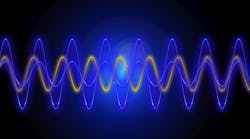This file type includes high-resolution graphics and schematics when applicable.
With mobile traffic expected to surge significantly over the next 10 years, demands will intensify for more efficient use of available frequency spectrum, increased network speeds, and opening of additional frequency spectrum for wireless applications. In the white paper, “Non-orthogonal Multiple Access and Massive MIMO for Improved Spectrum Efficiency,” Anritsu examines 5G wireless access systems and describes two technology solutions to enhance spectrum efficiency: non-orthogonal multiple-access (NOMA) and multiple input, multiple output (MIMO).
Next-generation 5G access systems, for example, are being investigated to provide the required solutions. Proposals for 5G systems aim to increase spectrum efficiency by various methods. A NOMA implementation for 5G systems is being discussed, as it improves spectrum efficiency by extending the user multiplex domain. This implementation requires encoding and interference cancellation technologies that have been considered difficult to implement in the past. However, recent central-processing-unit (CPU) performance improvements are enabling the development of these technology solutions.
NOMA can be grouped into three categories: NOMA with successive interference canceller/semi-orthogonal multiple-access (SIC/SOMA), sparse code multiple-access (SCMA), and interleave division multiple-access (IDMA). Each of these methods uses a different user multiplex domain to improve spectrum efficiency. NOMA with SIC/SOMA utilizes the new power domain, for example. The SCMA method takes advantage of the power and code domains, while the IDMA method utilizes the code domain.
MIMO is an important aspect of today’s wireless-communications systems, as it achieves high throughput and reliability by using multiple antennas. Massive-MIMO technology is targeted as a solution for future 5G systems. Massive MIMO uses as many as 100 antenna elements to support simultaneous communication with multiple mobile terminals, thereby significantly improving the spectrum usage efficiency. In addition, millimeter-wave frequencies are being investigated for 5G to enable high-speed communications. However, transmission losses are greater at these higher frequencies. The white paper describes how a beamforming (BF) technique can be used with massive-MIMO antenna configurations to counter increased transmission losses.
Anritsu Corp., 490 Jarvis Dr., Morgan Hill, CA 95037-2809; (408) 778-2000; www.anritsu.com.
Looking for parts? Go to SourceESB.

